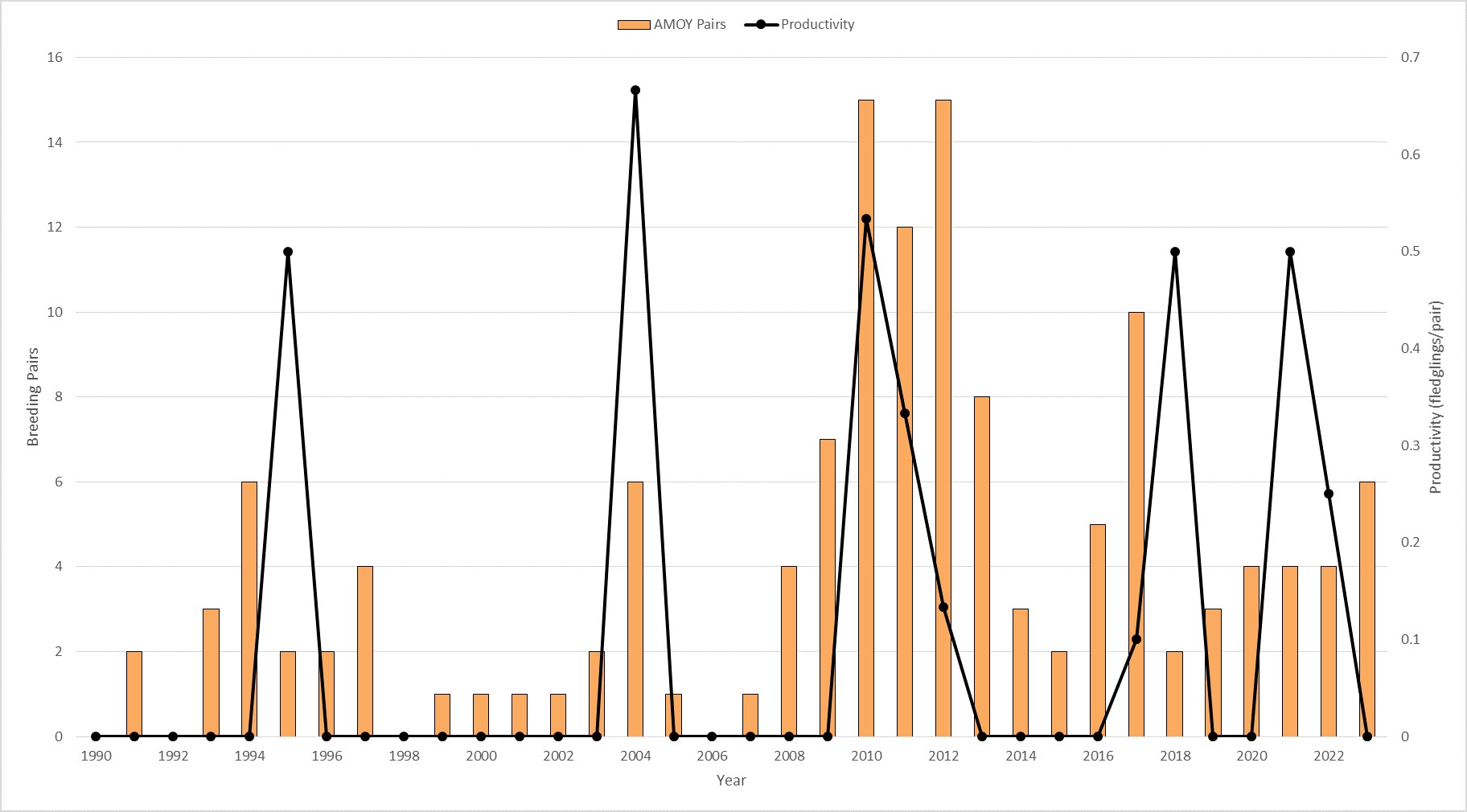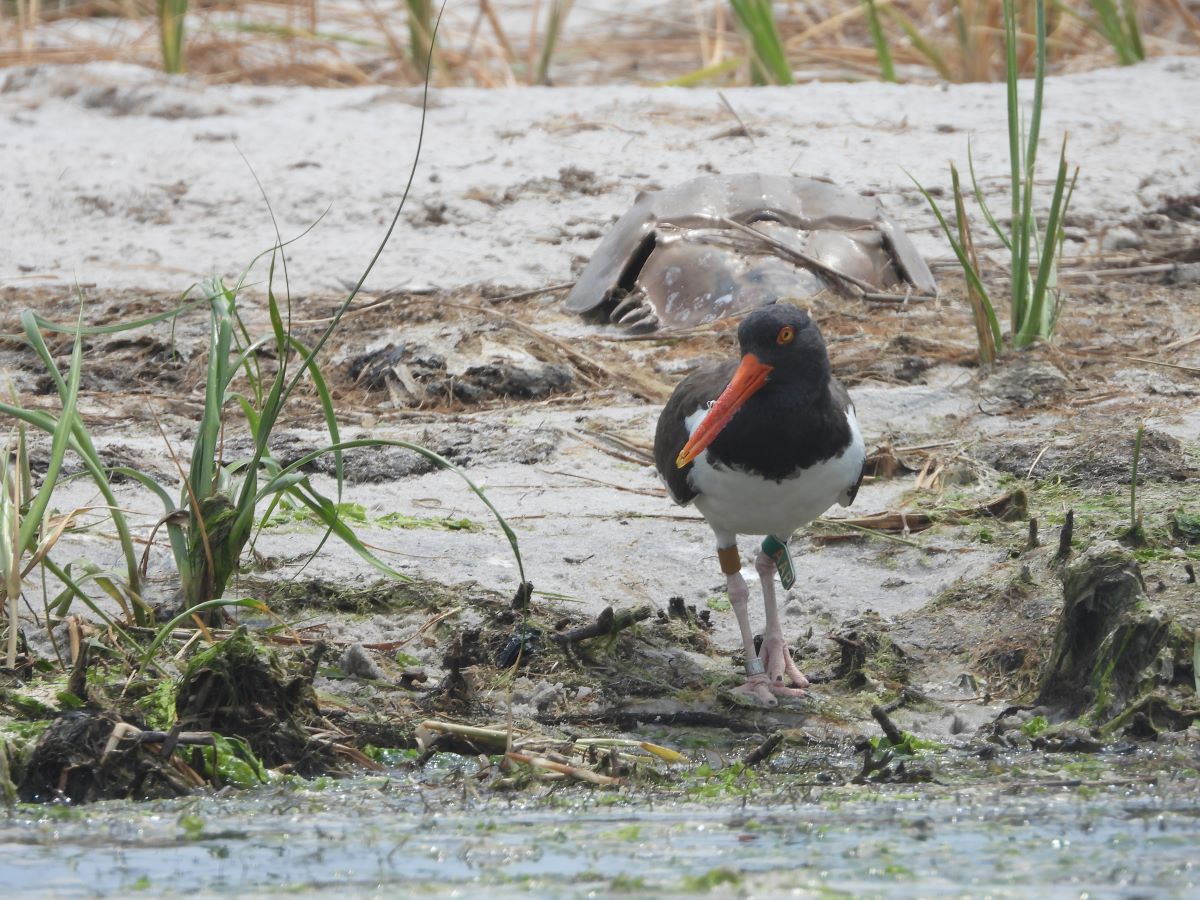American oystercatchers are black and white shorebirds with bright orange beaks that feed and nest on the beach. The Beach-Nesting Bird Program monitors the population and productivity of American oystercatchers in Delaware.

These birds begin arriving in Delaware in March, start nesting in April and migrate south by September.
Like piping plovers and least terns, they lay their eggs directly on the sand. They will also nest in salt marshes.
Historically, American oystercatchers have nested at Cape Henlopen State Park, Delaware Seashore State Park and Delaware’s Inland Bays. They started nesting at Fowler Beach, in Prime Hook National Wildlife Refuge, following the completion of a restoration project in 2016.
The state has tracked nesting pairs of American oystercatchers since 1974 and recorded the number of fledglings each year.

The number of nesting American oystercatchers in Delaware is variable. DNREC monitors them once they arrive for the breeding season and until the last chick has fledged.
Any sightings of banded oystercatchers are reported to the American Oystercatcher Working Group. In Delaware, oystercatchers have not been banded since 2012. DNREC staff regularly spot banded oystercatchers on the beaches, and in the Inland Bays.
It is believed that fledgling success is higher in the Inland Bay marshes. However, due to access constraints and dense vegetation, it can be challenging to monitor them in these habitats. Survey coverage in this area is increasing; state biologists hope to soon have a better understanding of American oystercatchers’ breeding success in Delaware.

In the most recent field season, several breeding pairs were identified on beaches and marshes around Delaware but no monitored American oystercatcher nests survived.
Most nest losses were caused by mammalian predation and beach and marsh flooding. One nest was lost due to suspected human disturbance.
The Beach-Nesting Bird Program hopes to understand more of what can be done to increase the oystercatcher’s productivity in Delaware.
Related Topics: american oystercatchers, atlantic ocean, beach nesters, beaches, birds, conservation, delaware bay, fish and wildlife, shorebirds, wildlife